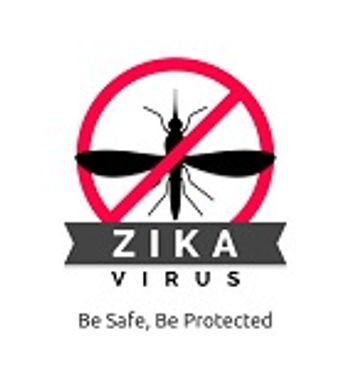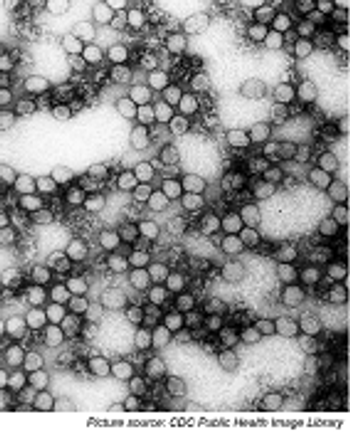
Seasonal influenza results in nearly 50,000 deaths each year in the United States alone, and 5 to 10 times as many deaths in all industrialized countries combined.

Seasonal influenza results in nearly 50,000 deaths each year in the United States alone, and 5 to 10 times as many deaths in all industrialized countries combined.

The untimely passing of pop music icon, Prince, is a somber reminder of the serious risks that can accompany an influenza infection.

Concerns over the deadly outbreak in the Midwest continue to grow as five more individuals have died from the previously misdiagnosed bacteria.

Despite having emerged as either the third or fourth leading cause of blood stream infections in the United States, the threat of multi-drug resistant Candida species remains an underappreciated concern.

Researchers from the National Academies of Sciences, Engineering, and Medicine report that there is a possibility of eliminating the transmission of both Hepatitis B and C in the United States.

Researchers find evidence to suggest virus strains in the most recent outbreak in the Americas evolved from an Asian lineage.

On Friday, April 15, 2016, WHO approved Sanofi Pasteur’s Dengvaxia (CYD-TDV), a live recombinant tetravalent vaccine for Dengue fever, first approved in Mexico in December 2015.

Researchers have revealed that the disease has been circulating in the region since at least January of 2015.

According to the National Institutes of Health (NIH), the first case of locally transmitted Zika virus infection in the continental United States is now inevitable. The virus already brings with it fears for pregnant women, and those women trying to become pregnant, but now, a Zika virus infection is likely a risk for all adults as the virus has been linked to yet another neurological disorder.

Scientists have developed a new ultra-sensitive screening technique for diseases such as HIV and cancers that may be 10,000 times more sensitive than those currently used clinical tests.

A new study has identified compounds that can reduce the virulence of the pathogenic bacterium Listeria monocytogenes.

The Centers for Disease Control and Prevention (CDC) recently reported that the Zika virus can be transmitted from an infected man to a sex partner through anal sex.

After meticulously analyzing existing evidence, CDC scientists concluded that not only does the Zika virus cause microcephaly, but it is also the culprit behind other serious, fatal brain defects.

Elizabethkingia is believed to be the cause for 18 deaths in Wisconsin, 1 death in Michigan, and now, 1 additional death in Illinois.

The results of a recent study suggest that the location of alcohol-based hand sanitizer stations in hospital entrances could influence visitor hand hygiene compliance.

This article is the third in a 3-part series on parasitic diseases of the central nervous system (CNS) and it highlights some of the treatment advances that are available for patients with these diseases, as well as disease control strategies that have been implemented by the World Health Organization (WHO) and other partners.

During a recent press conference, representatives from the CDC and NIAID agreed that the more researchers uncover about Zika, the scarier the virus appears to be.

A former health care worker has been linked to a recent outbreak of hepatitis C at two hospitals in Utah.

A recent case study adds to a small, but disturbing collection of reports describing the transmission of Ebola virus from mother to child through breastfeeding.

Since January 2016, WHO has been notified of Lassa fever outbreaks in Nigeria, Benin, and Togo, with cases linked to the Togo outbreak in both Germany and Atlanta, Georgia in the United States.

Recent Ebola-linked deaths in Guinea caused the World Health Organization (WHO) Guinea office to implement a “ring vaccination” strategy in which it administered an experimental Ebola vaccine on 800 of 1000 suspected cases, including 182 suspected at high-risk.

Sixteen of the 18 provinces in Angola have reported suspected cases of Yellow Fever. As of late March, there have been a total of 1132 suspected and confirmed Yellow Fever cases in the country, with 168 deaths.

The Obama administration recently announced plans to shift nearly $600 million in funds designated to battle the Ebola epidemic toward the fight against Zika.

The results of a double-blind, randomized, placebo-controlled trial in patients with persistent symptoms of Lyme disease have shown that long-term antibiotic treatment does not lead to better outcomes than short-term antibiotic treatment does.

This article is the second in a 3-part series on parasitic diseases of the central nervous system (CNS) and highlights some of the techniques that clinicians use for the diagnosis of parasitic diseases of the CNS.

The findings of a new study reinforce the value of making insecticide-treated nets and indoor residual spraying of insecticides universally available—even in countries where the mosquitoes that transmit disease bite primarily outdoors.

A recent review article may provide infectious disease specialists with an enhanced understanding of how to predict the outcome of current and future Chikungunya outbreaks.

Researchers at Jiangsu University in China have demonstrated that whole genome sequencing can be used to confirm findings from traditional bacterial genotyping methods to identify outbreaks of MRSA and control nosocomial transmission.

On March 8, 2016, researchers at the Ulsan National Institute of Science and Technology reported the development of an antibacterial fabric that inhibits the growth of bacteria, including antibiotic-resistant bacteria.

The Centers for Disease Control and Prevention (CDC) held a Zika Action Plan Summit in Atlanta, Georgia today with the aims of preparing health officials of the possibility of local Zika transmission.